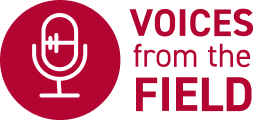
Danny is the Executive Director for the Virginia Harm Reduction Coalition, with a focus on LGBTQ+ communities. Motivated by personal experiences of vulnerability and loss, they became involved in HIV/Hep C prevention, entered the field of public health, and quickly found opportunities for harm reduction and public health to work together in well-evaluated contexts.
“That translates well into harm reduction because this space is all about participant-led.”
Danny laid out the common practices and potential for collaboration between public health and harm reduction, with monitoring and evaluation being a critical link, alongside some shared values and many shared goals.
“I think for harm reduction…once we get the larger network kind of trained up on monitoring and about evaluation tactics and techniques, I see an opportunity for this movement to be on the cutting edge of marrying radical community-based work and monitoring and evaluation. Because we're already so in tune to our participants and making sure that we're following their lead, that it just would naturally go together.”
“For the first year it was like, ‘Is this agency going to survive?’”
For evaluation capacity to truly expand in harm reduction, Danny sees funding as the critical element. To access funding, it is important to do some self-evaluation first, and confidently show your funder what your program is and what it does. Further funding can be secured using the data from evaluating program impacts. For Danny’s team, once the funding for evaluation arrived, they immediately turned to their participants for compensated feedback on their program.
“Truly, if we hadn't gotten that grant from NACCHO and [a large university] to do this point in time survey, we never would have… we were drowning this whole time I feel like we're finally in a place where I can breathe.”
“[the sample is] just whoever's actually coming up to your van, which is good because then you're getting feedback from the people that are using your services the most. So that's a valuable perspective and it's not something separate out of your daily activities, right? It's something that we did in parallel with our services and the great thing about having been funded is that then we were able to pay them for their time which you know it's important to us as much as we're about getting supplies to them and getting them connected to resources and a continuum of care we're just as passionate about doing whatever we can to get some coin in their pocket, right?”
“That was a big motivator for me, is kind of understanding people's understanding around PrEP.”
Danny shared their experience with an effort to improve their organization’s capacity and reach regarding Hep C treatment and PrEP access. Despite an attempt to provide easier PrEP access, uptake remained low. They decided to create a system for reaching a wider network by gathering qualitative responses around PrEP. A key part of that qualitative feedback was gathering a focus group of diverse participants and being able to see common concerns and attitudes that their program could alleviate and adapt to.
“The health department had lifted up a PrEP initiation program where people could come in and initiate their PrEP through the health department, which is really important because it's a lot closer to the general population…so that was really hopeful. But then the issue was that people aren't utilizing that service.”
“The health department had lifted up a PrEP initiation program where people could come in and initiate their PrEP through the health department, which is important because it's a lot closer to the general population…so that was hopeful. But then the issue was that people aren't utilizing that service.”
“So those were my two primary focuses, Hep C and PrEP education and kind of understanding what the knowledge level was, what the interest was, what they understood about it so that we could design programs around and around that data.”
“I think the most important part of our project is we did a focus group - we did two and it was a heavy lift - and it was so helpful…so that was illuminating and helped direct us of where we needed to focus our questions and then it was we were trying to understand like that knowledge attitude belief [of focus group members]”
“We’re lucky to have a kick-ass health department.”
Unfortunately, health departments can often be a barrier to growth in harm reduction programs, but when the local health department is on board and supportive, data from participant feedback and focus groups can be used to gain further funding in addition to greater awareness of your participants’ feelings and beliefs.
“We're lucky in the fact that like we were able to use the Hep C data to get a good grant from [a major funder] to do Hep C and HIV treatment and or testing and connection to a treatment. So that's been, it's been helpful. In terms of our funders, the funders follow the data, they care about the data.”
As we have covered, planning out your evaluation is an important step in the evaluation process. Once you have your plan in place, you are ready to dive in and begin implementing your harm reduction program evaluation. In the next module, we will explore the key elements involved when moving that plan forward.